Apricot Sibiryak Baikalova: description of the variety, cultivation features, reviews
Apricot Sibiryak Baikalov is the result of the work of the Honored Agronomist of Russia Ivan Leontyevich Baikalov. Thanks to the efforts of the breeder, the inhabitants of Siberia were able to grow heat-loving crops in their region. The variety is distinguished by high winter hardiness and productivity. Fruits of attractive orange color with bright blush have a pleasant sweet and sour taste.
The content of the article
Description of the variety Sibiryak Baikalova
Sibiryak Baikalova is a promising apricot variety bred by I.L.Baikalov in 1979. All varieties of Baikalov: Golden Siberian, Gift of Nature, East Siberian, Gorny Abakan, Pride of Khakassia, Sayan.
The culture was tested in the garden of the Research Institute of Agrarian Problems of Khakassia.
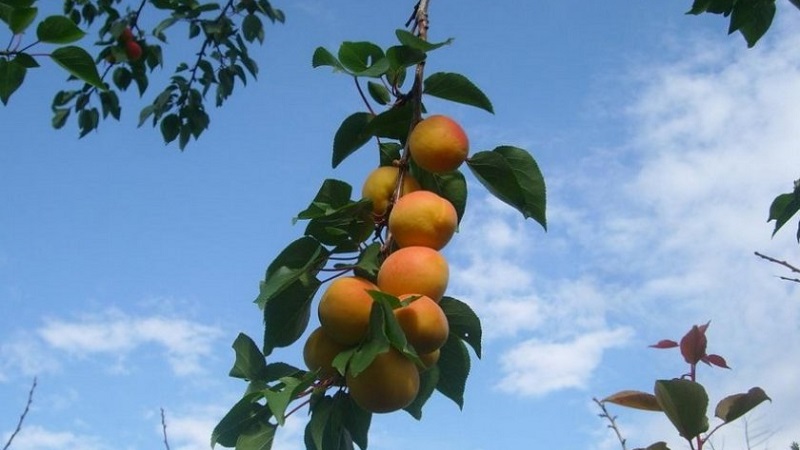
The variety is distinguished by frost resistance and the ability to give a high yield. after long winters with severe frosts. Temperature fluctuations do not affect the formation of ovaries.
Specifications
Features of the variety:
- tall trees - 3–3.5 m;
- the crown is thick brown, rounded, reaching 4 m in diameter;
- young shoots of a reddish tint;
- high ability to restore damaged shoots;
- fruit buds appear on 2-3-year-old wood and form bouquets of 2-5 buds each;
- the rest period is short;
- flowering - May 9-13;
- flowers are white-pink, medium or large;
- leaves are rounded, serrated at the edges, the outside is dark green, the back is light green;
- high foliage;
- medium-sized stalk of green color;
- branches are strong and straight;
- the beginning of fruiting - 4 years after planting;
- fruits appear on 2-3 year old branches;
- self-fertility requires the planting of pollinating varieties (Sayan, Gorny Abakan);
- yield - 23-25 kg per tree;
- harvesting - late July - early August;
- keeping quality of fruits is low (2-3 weeks);
- the level of transportation is average.
Description of fruits:
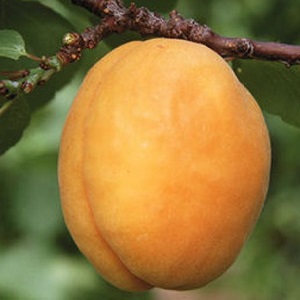 weight - 25–37 g;
weight - 25–37 g;- the shape is flat-oval, elongated;
- the skin is dense orange, with a thick fluff and a continuous blush;
- juicy orange pulp;
- the stone is easily separated, the core is without bitterness;
- the taste is sweet;
- medium aroma;
- the share of dry matter - 16%, sugars - 7.1%, acids - 2.4%, vitamin C - 8.1 mg /%, pectin - 0.57% per 100 g;
- the purpose is universal.
Fruit size depends on seasonal weather conditions: the more sunny days, the larger the apricots.
Pros and cons
The advantages of the variety:
- quick recovery of shoots;
- frost resistance - up to -40 ° С;
- the plant is not prone to thickening of the crown, therefore the forming pruning is done Once every 2 years;
- tasting taste assessment - 4.8 points;
- universal purpose of fruits;
- ease of care.
disadvantages:
- low resistance to diseases and insects;
- the need for additional pollination;
- freezing of fruit buds.
Interesting on the site:
Features of growing varieties
The Sibiryak Baikalova variety bears fruit steadily and annually pleases with a rich harvest... To ensure optimal conditions for the growth and development of trees, it is important to choose the right planting site. The culture takes root in areas protected from gusty winds, therefore it is planted on the south side, near outbuildings and houses. This will shelter the plants from the cold wind and provide a high level of light.
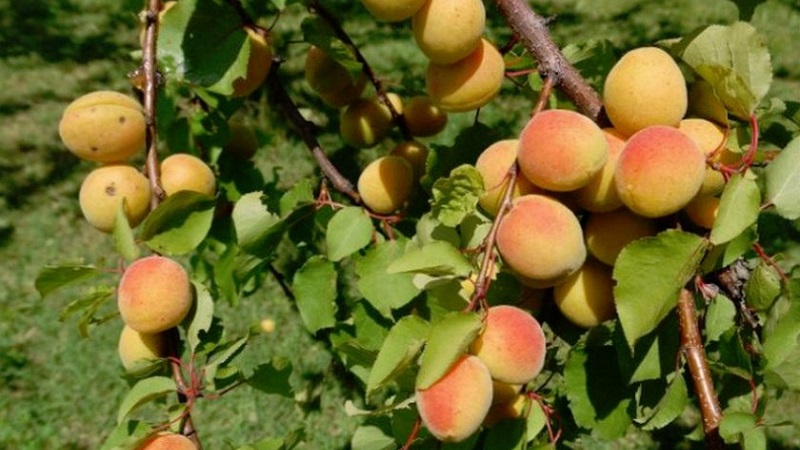
The variety prefers fertile soil with a loose structure, neutral to slightly alkaline pH and low groundwater table (no higher than 3 m). Sour soil is lime before planting - 400-500 g of slaked lime is added per 1 m². Clogged and heavy clay soil is lightened with river sand (10 kg per 1 m² for digging).
Landing pits are prepared in advance: on the site, dug depressions measuring 70x70x70 cm, mix the soil from the pit with humus and superphosphate (30 g per 1 m²), wood ash (200 g) and fill it back up. Prepare pits in autumn, with spring planting, and in spring, in the autumn.
Advice!If you purchased the seedling too late and did not have time to prepare the planting hole, dig in the young tree in the trench. So the plant will more easily transfer time to planting in a permanent place.
The seedling is lowered into a prepared hole and covered with earth to the level of the root collar, without deepening it. A watering circle is made along the diameter of the hole and 20 liters of clean water are poured into it.
Gardeners also practice the horizontal version of planting apricots... A young seedling is bent to the ground and fixed to the branches at an angle of 40 °. This provides the young tree with warmth from the ground.
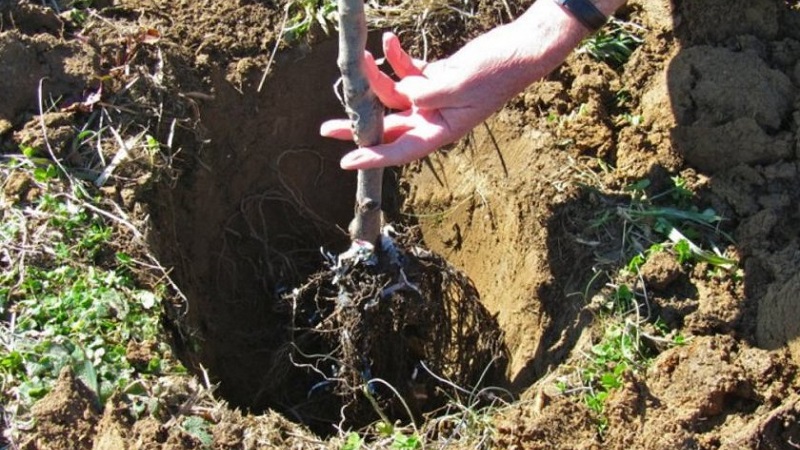
Apricot care
The crop does not tolerate excess moisture in the soil and needs moderate watering... The trunk circle is watered once every 2 weeks. Watering stops during the rainy season. Installing a drip irrigation system can reduce labor costs, especially when growing trees in large quantities. Plastic or metal pipes with irrigation drippers are laid on the site and water is supplied by gravity or under pressure. At the same time, water should not fall on the tree - this threatens with a decrease in yield due to washing out of pollen.
Top dressing
Apricot needs regular feeding... Mineral complexes are applied in spring and autumn, organic - in early spring and before flowering.
Reference. The preparations "Iskra Bio", "Agravertin", "Healthy Garden", "Akarin" increase the defenses of the plant and eliminate the need to apply insecticides against insects.
Organic matter is introduced before flowering: for 10 l of water 500 ml of chicken manure solution. The tool is watered around the trunk circle. After 5 days, 1 liter of wood ash is embedded in the soil to prevent acidification.
For the correct formation of fruits after flowering, trees are fed with potassium and phosphorus.: 40 g of potassium sulfate, 40 g of superphosphate, 60 g of carbamide are diluted in 10 liters of water. Fertilizer is applied to the near-stem area. After a week, add 1 liter of wood ash.
The falling of the ovaries signals an excess of nitrogen in the soil... During the formation of ovaries, trees are fertilized with a nutrient solution: 30 g of superphosphate and 30 g of potassium sulfate per 10 liters of water.
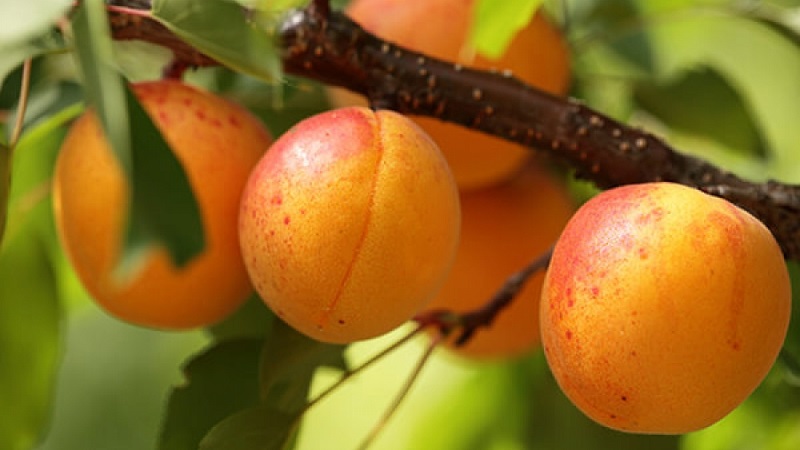
Wintering
Before wintering perform water-charging abundant watering of trees and mulch the tree trunk circle with spruce branches, tie the trunk with burlap or synthetic material to prevent damage to the bark by rodents. In winter, the snow cover is constantly trampled. In February, the trunks are tied with white non-woven cloth to protect the bark from sunburn.
Crown molding
Deckless crown molding is considered one of the best for apricot... It assumes the presence of 5-6 main branches, located at an interval of 40 cm. The procedure begins at the age of 1 year of the plant from the moment of planting. If there are no branches, the seedling is pruned after spring planting at a level of 80–90 cm. If there are side branches, select 2 along the row and cut them in half. The rest are cut into a ring.
The center conductor is shortened by 20-25 cm above the lateral branches. In summer, shoots growing at an acute angle are removed. In the future, another 3-4 main branches are laid, on which the branches of the second row are formed with an interval of 35-40 cm. It is important to constantly monitor the growth of shoots and not allow the upper ones to outstrip the lower ones.
Excess shoots are shortened and turned into overgrown fruit... After determining the last main branch in the following spring, the central conductor above it is cut off.
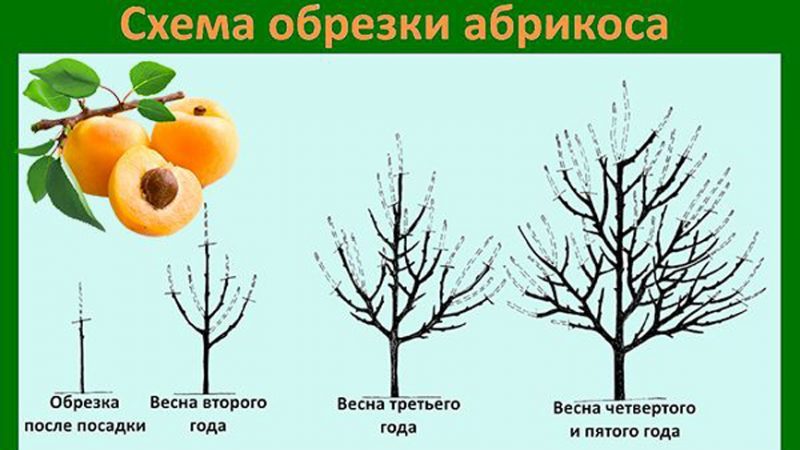
Disease and pest control
Apricot Sibiryak Baikalov is susceptible to attacks of insect pests... The fruits become food for moths and sawflies, the leaves are eaten by aphids. To destroy them, insecticides are used: "Aktaru", "Match", "Mospilan", "Prokleim", "Omite".
The variety is prone to moniliosis, or gray rot... The infection affects flowers, bark and fruits. The cause of the disease is the Monilia fungus penetrating the pistil. Ascomycete grows into a peduncle and gets into branches. Symptoms: shedding of ovaries and flowers in May, dry branches in June, affected leaves and fruits in July. On the bark of an infected tree, light gray pads with dark dots - spores are visible. Branches and foliage turn dark brown and dry. Rounded gray spots appear on the fruit.
Favorable conditions for fungus - low air temperature in early spring and during the flowering period, high humidity. To prevent infection, trees are sprayed with Horus, Mikosan-V, 1% Bordeaux liquid, and urea solution before flowering. After that, the apricots are processed 2 times in June - July and 2 times after harvest. Dry branches are cut and burned, the trunk circle is dug up, and the optimal level of calcium in the soil is maintained. The same prophylaxis methods are used to combat perforated spotting.
Reviews
Apricot variety Sibiryak Baikalova is popular with gardeners due to its unpretentious care, abundant fruiting and excellent fruit taste.
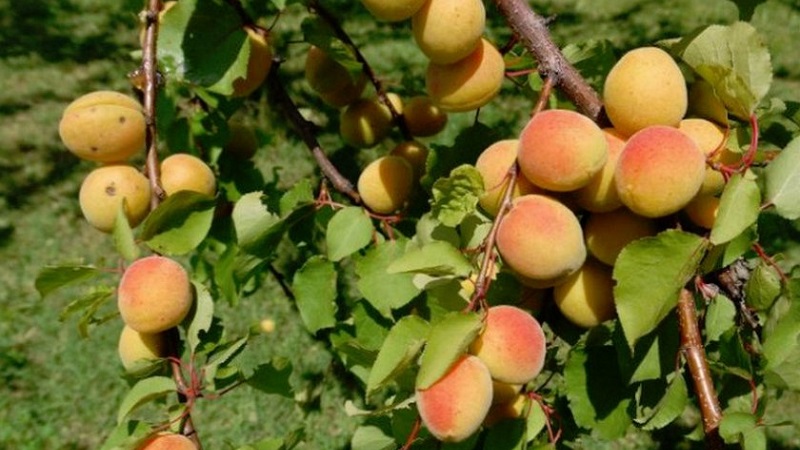
Elena, Tomsk: “We have been growing this apricot variety in our country house for 10 years and are not overjoyed. It bears fruit abundantly, but the volume of the crop depends on weather conditions. If the summer is cold, apricots grow small and sour, if it is hot, the fruits are large, ruddy and sweet. Taking care of trees is easy, the main thing is to water and fertilize on time. We use chicken manure, ash and superphosphate ".
Vladislav, Kemerovo: “It would seem that there are apricots in our area, but thanks to the efforts of breeders, everything is possible. The saplings of Sibiryak Baikalov were planted 5 years ago and we are already harvesting at full speed. Trees can withstand severe frosts when sheltered for the winter. I cover the tree trunk circle with spruce branches, and in winter I periodically throw up snow and compact it. Apricots have a pleasant sweet and sour taste and an attractive appearance. With sufficient light, the blush completely fills the fruit ".
Conclusion
Sibiryak Baikalova is an apricot variety bred specifically for regions with a cold climate. The culture is characterized by rapid recovery of shoots, frost resistance up to -40 ° C, yield up to 25 kg per tree. Fruit tasting score - 4.8 points, fruits attract with a rich orange color with a bright blush. The taste of apricots is pleasant, balanced.